Effective illustrated books have the potential for more purpose than telling simple stories. Granted, that is where most illustrated or picture books reside, but some of them live in a vein diagram world with more intersections. Wonders of the Night Sky is an illustrated book that has its fingers in the figurative pie of several circles and acts as a lushly illustrated reference book or a highly detailed illustrated book, just to mention two of them. One could also marvel at Wonders of the Night Sky just for its artwork as you appreciate the thousand shades of blue that are deftly mixed with the blackness of outer space. It also might make you gaze up at the night sky a bit more, especially if you’re in a more rural area, and are able to see more of the limitless palette of darkness that are interspersed with lights of a different color.
The first thing that you might think when you see Wonders of the Night Sky is that this book is too smart for you. The illustrations by Jan Bielecki are far too detailed, class, and intelligent looking for a children’s book. Then you’ll read the content that’s written by Professor Raman Prinja. The book is written by a professor and the very short, paragraph-length text is presented over realistic art and has dozens of four or five syllable words. This is where it’s important to distinguish between a book that’s too smart, and does a poor of determining its audience and others that allow readers to be as smart as they’re able.
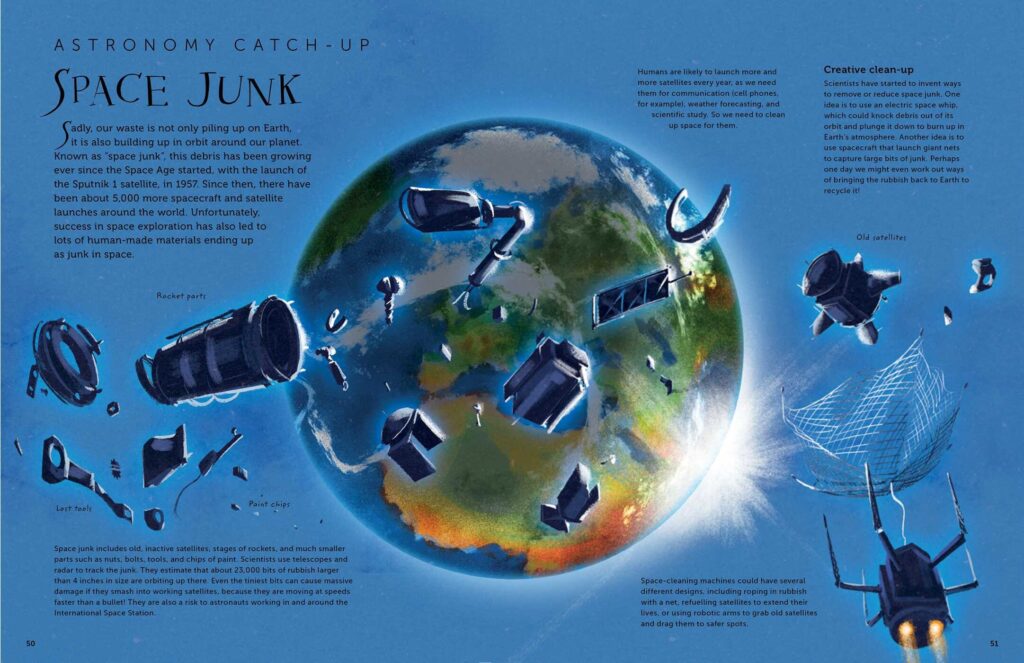
A great way to figure out the role of a non-fiction, educational illustrated book is to visualize how it could be used by a fourth or fifth-grader. This is the age when they start to create essays of varying degrees of difficulty and interest. Those ages will be asked to use two or three different sources in their essays and will be told numerous times that “Google is not a source.” However, those ages that use Wonders of the Night Sky as a source for their planetary or outer space citations will be met with a pool of content that their competition won’t have.
Those upper elementary ages might be intimidated by the smaller font and bigger words, but once they calm down and let the illustrations relax their busy minds, they’ll see that they’re able to understand the text. Wonders of the Night Sky is organized by a table of contents as to different elements in the sky that we can see or that we know are out there. Stars, planets, the moon, rocky landscapes, auroras, human-made things, galaxies, plus a couple of activities for kids to do, a glossary and ways for kids to learn more make up the book.
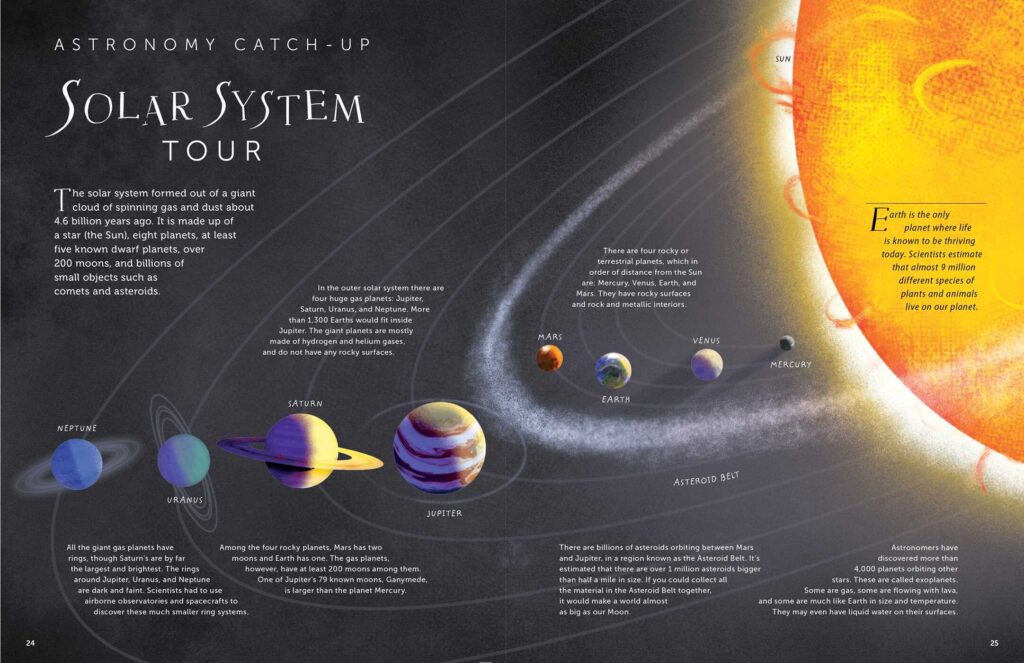
That adds up to a loose narrative that’s based on descriptions and locations of things. There aren’t page breaks for the categories, so if you’re not paying attention they can merge into seamless outer space chatter. However, as this is an illustrated reference book, its primary audience won’t read the book cover-to-cover. Readers who are more focused on the art than the text will thumb through the book all the way through it without missing a page. Those STEM kids will read it cover-to-cover because it takes the Nat Geo Kids approach and transfers it to things of a more stellar nature.
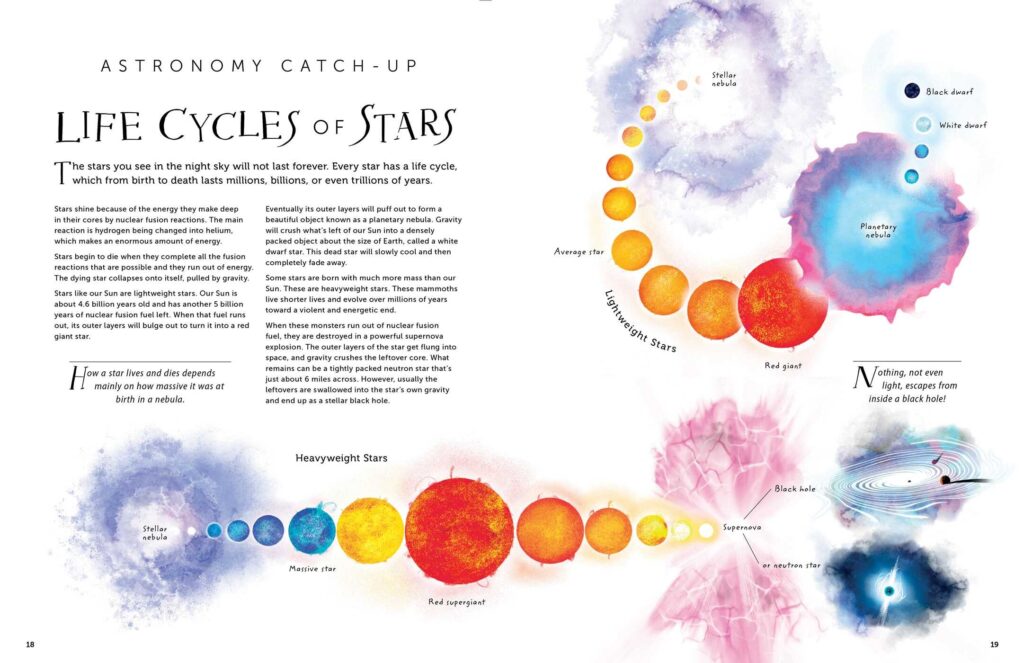
These are the blurbs that are easily repeated and usually made up of two to three sentences on each topic. Sometimes they’ll have full-length paragraphs, but that’s certainly the exception rather than the rule. As Wonders of the Night Sky goes on those ages will be able to produce a very complete and thorough essay on topics that are more complex than their teacher will be expecting. It’s one of those illustrated books that proves that the medium is capable of educating at a higher level, while entertaining at the same time in a package that young ages are instinctively attracted to.

On a personal note, we dabble in astrophotography and love vacationing in dark places where there is less light pollution. The book starts out by providing an overview of how to look at the night sky and some supplies that young, nighttime sky gazers will need in order to get the most from it.
Wonders of the Night Sky: Astronomy Starts with Just Looking Up, is by Professor Raman Prinja with illustrations by Jan Bielecki and is available on Aladdin/Beyond Words, an imprint of Simon & Schuster.
There are affiliate links in this post.

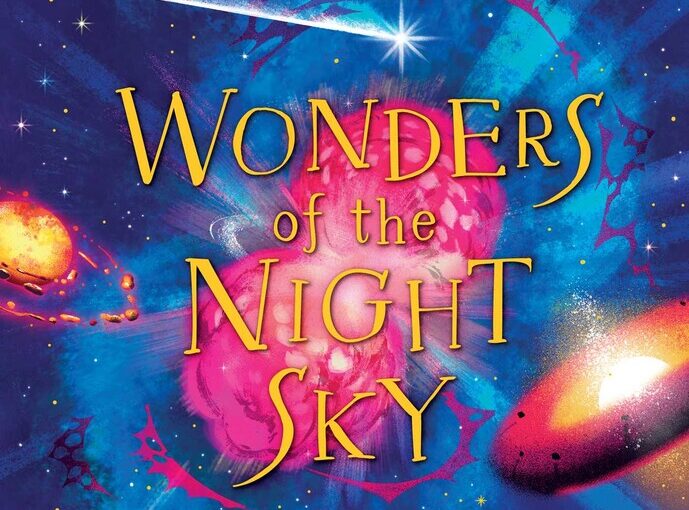
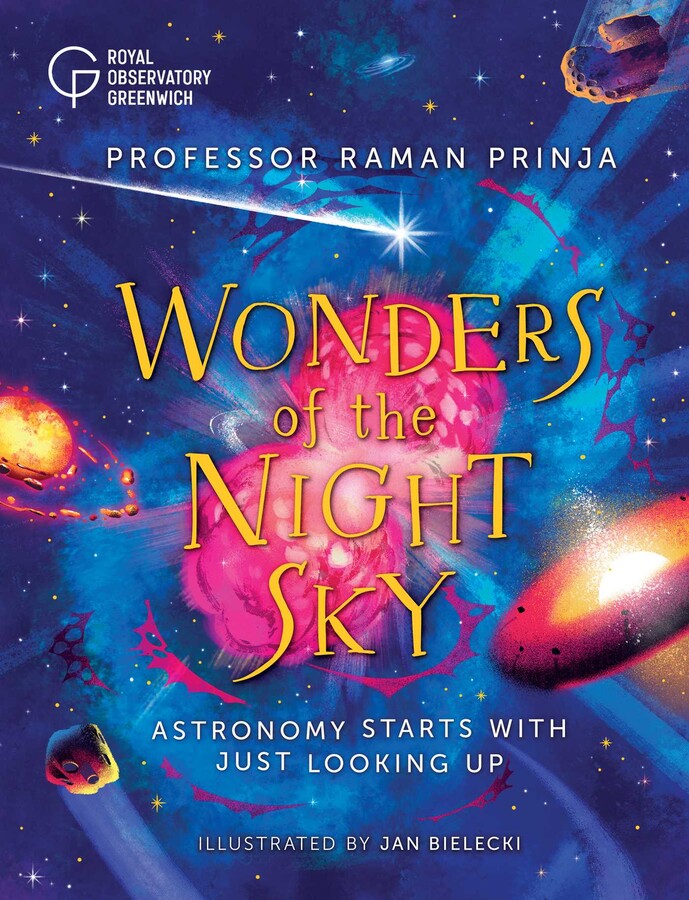



 Facebook
Facebook Twitter
Twitter Flickr
Flickr GooglePlus
GooglePlus Youtube
Youtube